WATERVILLE — Colby College President David A. Greene’s plan five years ago was to work with the community and city to invest in the college and Waterville to help create not only a stronger educational institution but also a stronger city, region and state.
To assess the impact of the college’s investments to date, Colby hired a firm to do an independent economic analysis whose results show dramatic findings on the impact the college is having in terms of investments, jobs, property values and other areas.
For instance, from 2014 to 2018, Colby’s operations, investments and visitor and student spending resulted in an economic output of $1.5 billion in Maine, $1.1 billion of which was expended in greater Waterville, according to the study.
The analysis, conducted by economist Chuck Lawton; Ryan Wallace, of the University of Southern Maine Center for Business and Economic Research; and Michael LeVert, of Stepwise Data Research, also shows that in 2o18, Colby supported $305 million in sales to local businesses, more than 2,500 jobs and $111 million in wages and generated $8.7 million in income, sales and property tax revenue for the region.
Colby, the second-largest private employer in the Kennebec-Somerset counties region, spent more than $210 million on operational and capital expenditures last year that flowed through nearly 1,000 vendors in Maine, according to the report.
Furthermore, from 2014 to 2018, Colby invested nearly $176 million in facilities, including $33 million in the city’s downtown, and during the same period, it made about $1.7 million in payments to and for the benefit of the city.
In 2018 alone, 34,500 overnight Colby visitors spent $5.1 million, and from 2014 to 2018, overnight visitors spent $23.6 million. Colby students spent $9 million during that period at local, off-campus businesses, according to the report.
Greene presented these results Tuesday morning to local and state economic development officials and others at the college’s Bill & Joan Alfond Main Street Commons, a mixed-use residential complex the college built and opened last year at 150 Main St.
“We don’t often think in Maine about colleges and universities being economic drivers, but they’re absolutely essential to a strong economy,” Greene said.
Those present included Charlotte Mace, director of the Office of Business Development at the Maine Department of Economic and Community Development; Garvan Donegan, director of planning and economic development at the Central Maine Growth Council; Kimberly N. Lindlof, president and chief executive officer of the Mid-Maine Chamber of Commerce and executive director of the Central Maine Growth Council; Jim LaLiberty, chairman of the Waterville Creates! Board of Directors; Brian Clark, Colby’s vice president of planning; Doug Terp, Colby’s vice president for administration and chief financial officer; and Dean of the College Karlene Burrell-McRae.
https://cloudup.com/cphYaYYPwrc
Mace, who said her role is to help new businesses and help attract businesses to Maine, said officials are preparing a strategic economic plan for the state, which has been a priority for Gov. Janet Mills, and Mace sees parallels between Mills’ plan and Colby’s collaborative partnership model.
That model shows a public-private partnership that includes an academic institution, the community, state and other entities is a systems approach for thinking about economic development, according to Mace. Attracting and maintaining talent is important in the state plan, and Mace said she sees that evident in the Colby model. The workforce issue is something the economic plan intends to tackle, head-on, according to Mace, who said she visits manufacturers and other businesses all over the state, and workforce is always a point of discussion.

Charlotte Mace of the Maine Department of Economic and Community Development speaks Tuesday during Colby College’s release of an economic impact report in Waterville.
“That’s the top feedback — I don’t have the workers that I need,” she said.
Lindlof said businesses have been opening in Waterville following Colby’s investments, including Portland Pie Co. and OPA, a Greek restaurant downtown, as well as Melon Togo a little farther north on Main Street. Those businesses are continuing to remain open, unlike in the past.
“Nothing’s gone down, so these numbers play out with what we know,” she said. “The pie is getting bigger.”
LaLiberty, a lawyer and lifetime city resident, said he has never seen anything like the movement occurring in the city since Colby’s initial and ongoing investments, which are precedent-setting. What is happening on Main Street now, including plans for other downtown projects such as the Paul J. Schupf Art Center, represent the most important developments in the city in 60 years, according to LaLiberty.
“I think it’s important to recognize from the beginning that this is a historic point for the city of Waterville,” he said.
‘An unusual approach’ to economic development
Greene said Monday in an interview at his office on Mayflower Hill that it was important for Colby to invest in projects that would benefit the region and state as a whole.
“When I came to Colby, we put in place a plan that was deliberately designed to both enhance the college and the community, and that’s an unusual approach for a college to take,” he said. “I wanted to make sure that Colby was one of those places that did that.”

Colby College President David Greene discusses the college’s release of their economic impact report in Waterville on Tuesday.
After Greene started at Colby in 2014, he led several meetings with city and business leaders, as well as those involved in the arts, to help identify what the city needed to grow and thrive, to draw more people to live and work downtown and make it a more vibrant city center. One of the things the group determined is that vacant and dilapidated buildings downtown needed to be addressed.
Colby purchased and renovated, to the tune of $5.5 million, a vacant former bank building at 173 Main St. which now houses Colby offices and the tech firm CGI Group on upper floors and Portland Pie Co. on the ground floor; bought and razed a former Elks building on Appleton Street and turned it into needed parking; and built a $25 million mixed-use residential complex, the Bill & Joan Alfond Main Street Commons, which is home to some 200 Colby students, faculty and staff and has a community room on the ground floor for the city and others to hold meetings. Colby also purchased buildings at the south end of Main Street, razed two on the eastern side of the street and is in the midst of building a $26 million, 53-room hotel with a restaurant there.
Beyond that, the college is working with Waterville Creates! to raise $18-$20 million to transform a former mixed-use building downtown to a center for art and film, with plans to re-locate the independent art cinema, Railroad Square Cinema, there. Castonguay Square, a park in the center of the city next to City Hall, also is slated for improvements. A $7.37 million federal BUILD grant the city received will be used to change the traffic pattern downtown from one to two-way, help improve streets, intersections and sidewalks and make other changes.
Colby is building a $200 million, 350,000-square-foot athletic center on campus that is slated to open next year, and the college plans to start building a performing arts center next year.
The investments have contributed to labor and wage growth in Waterville that is bucking statewide trends, according to the Colby economic analysis. Most of the state is experiencing declines in population and labor force, while Colby’s investments have helped increase the city’s population and labor force by 6 percent compared to that of Kennebec and Somerset counties, which have experienced a decline in both areas of 2 percent, the study points out.

Colby College’s Brian Clark offers input Tuesday during the college’s release of an economic impact report in Waterville.
Colby also is attracting employees who are younger and earn salaries that are higher than average, contributing to the increase in home values and adding to the city’s tax base, it says. The college is attracting educated workers, and thousands of its alumni are staying in Maine beyond graduation. About 3,700 alumni now work in Maine, according to Greene.
“One of the myths about colleges like Colby is that we graduate people who all leave the state,” he said. “That is simply not true.”
Maine is facing some tough headwinds when it comes to the economy, according to Greene. It has the oldest population in the U.S. and is 45th in terms of population growth. There are not enough people to fill jobs.
Waterville is changing, however, and heading in the right direction in terms of population growth, labor growth and employment opportunities, according to Greene.
Between 2014 and 2018, the number of jobs at Colby increased from 756 to 899 and the average salary went from $59,221 to $63,080, he said. The state average is $43,000.
Colby also buys locally whenever it can. Last year, the college spent $58 million at more than 1,000 vendors.
“Those are businesses all throughout the state that are benefiting from our direct spend,” Greene said.
The ovens and refrigerators in the Alfond building on Main Street were purchased from Fortin’s Home Furnishings in Winslow, for instance.
“Fourteen and a half million direct spending into the local economy on a $25 million project — that can make a big difference for local businesses and local workers,” Greene said.
Colby has, so far, invested $75 million in direct investment downtown and pays taxes on properties it has invested in that previously were not generating taxes, or generating a much smaller amount. The 173 Main St. building, for instance, generated $4,600 in taxes before Colby renovated it and now the college pays $35,000 in taxes on the building.
“On this building,” he said, referring to the Alfond Commons in which Tuesday’s meeting was held, “we pay $65,000 a year — twice what we’re required to pay because we want to be able to support the city,” he said.
Greene also noted that Colby has helped fill gaps when the city has needed it by buying a police cruiser, for example, and helping to fund needs for the RiverWalk at Head of Falls.

Colby College’s Karlene A. Burrell-McRae offers input Tuesday during the college’s release of an economic impact report in Waterville.
Donegan, of the Central Maine Growth Council, says the revitalization spearheaded by Colby is driving an “outsized economic, employment and population growth” in the community.
“While we’re already seeing good signs of progress, including rising real estate values and a significant increase in real estate transactions downtown, what’s especially exciting is that this is just the beginning,” Donegan said in a Colby press release. “In fact, the Growth Council is seeing an exceptional level of new leads from businesses that are interested in the Waterville area.”
Lindlof, of the Chamber of Commerce, said that while the college has always been an economic driver in the region, the analysis shows the impact has increased on several fronts, from direct contributions to the city to attracting a talented new labor force to the state.
“The school is a vital economic engine for Maine, and its recent investments in our community are unprecedented,” she said in the release. “I haven’t seen this kind of growth and momentum in my 26 years with the chamber.”
Colby’s investments have spurred others to invest in downtown. Businessman Bill Mitchell bought and renovated several historic buildings and recently opened The Elm, an events center, in the former American Legion post on College Avenue. Siblings Tracy Nale and Tom Nale Jr., both young lawyers, have purchased two buildings downtown. The former Seton Hospital is slated to be renovated for housing, and North River LLC bought two former mill buildings next to Hathaway Creative Center, which it also owns, and plans to turn the buildings into housing, commercial and retail spaces.
“Those, to me, are the really encouraging signs, and I think we’ve just started,” Greene said.
With the economic analysis, Greene now has data to show other investors that coming to Waterville is a good bet, he said. The results so far have been gratifying, and he is optimistic the Colby model will be replicated throughout the state.
“It can happen elsewhere,” he said.
Send questions/comments to the editors.


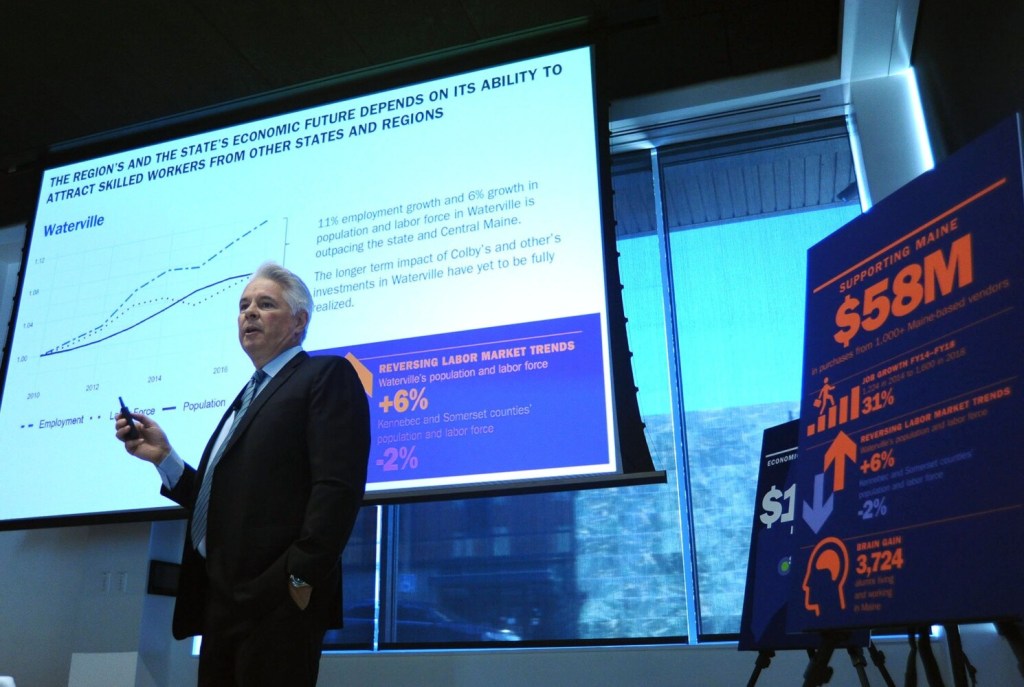
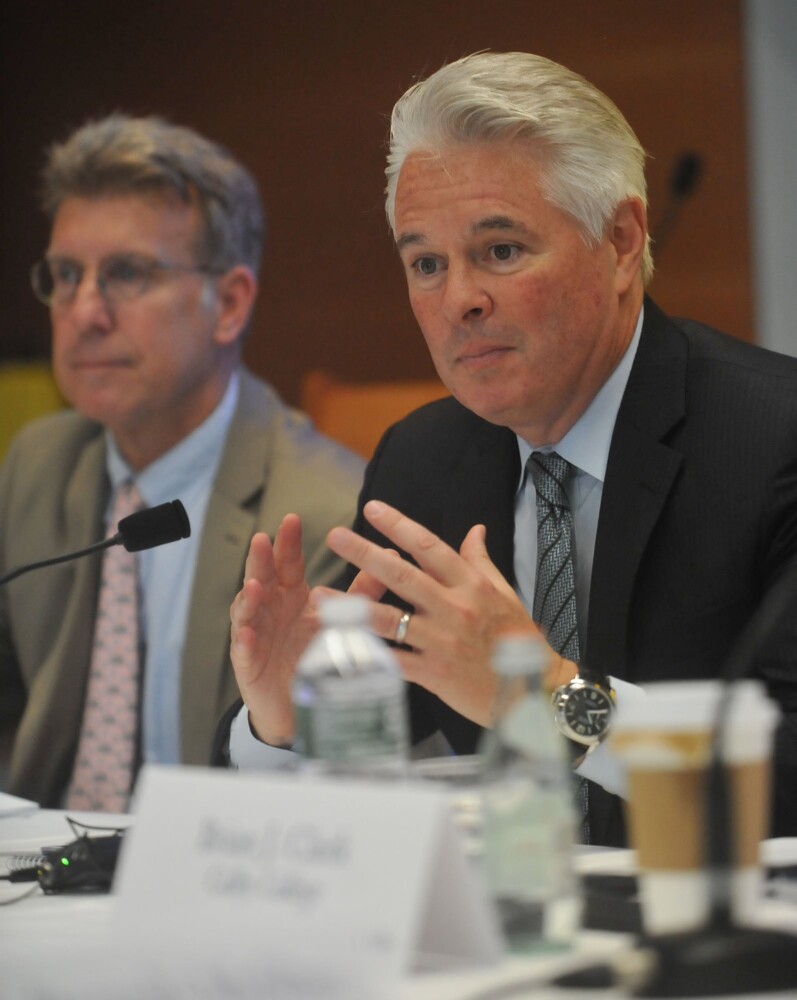
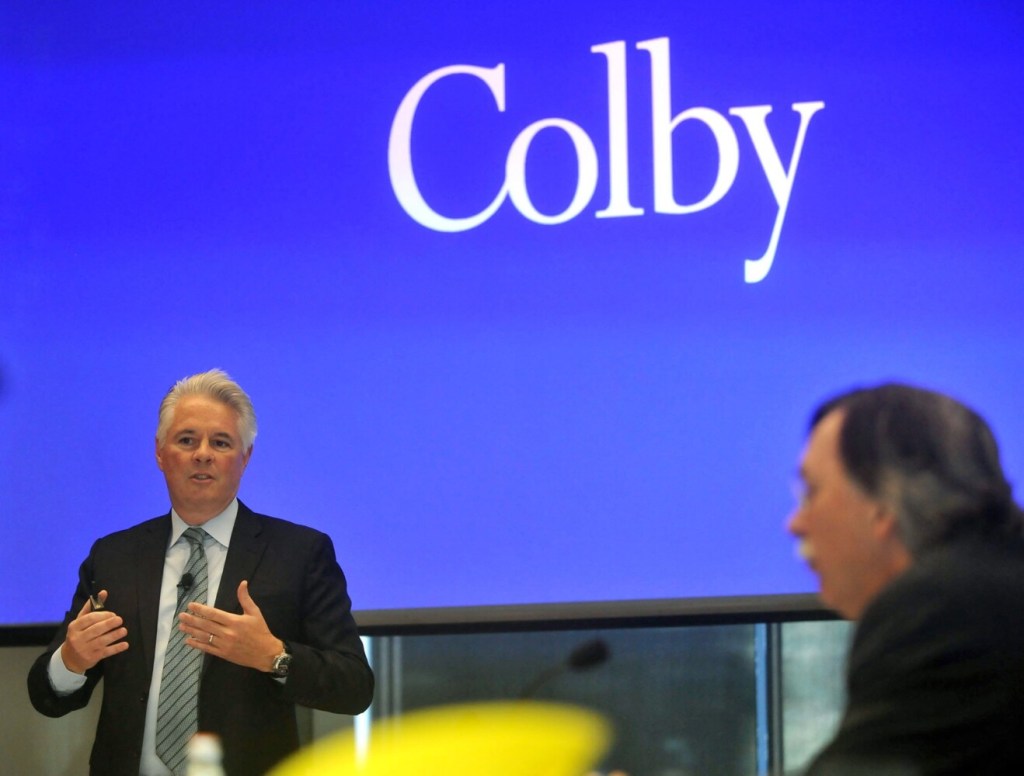
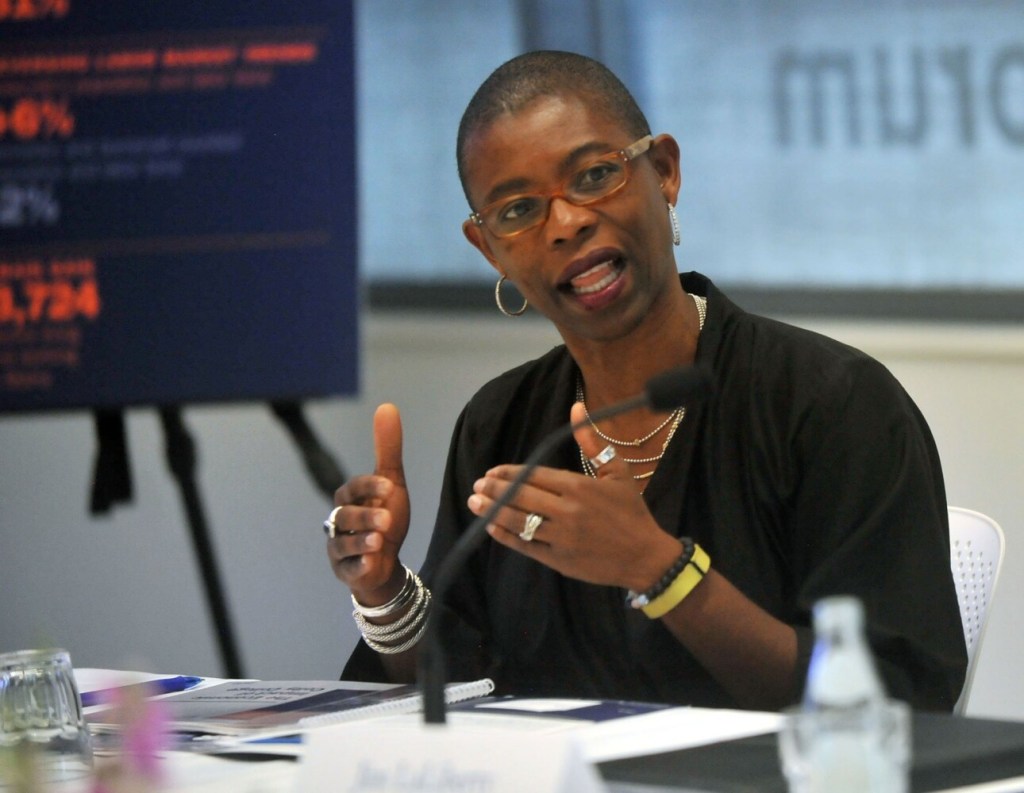
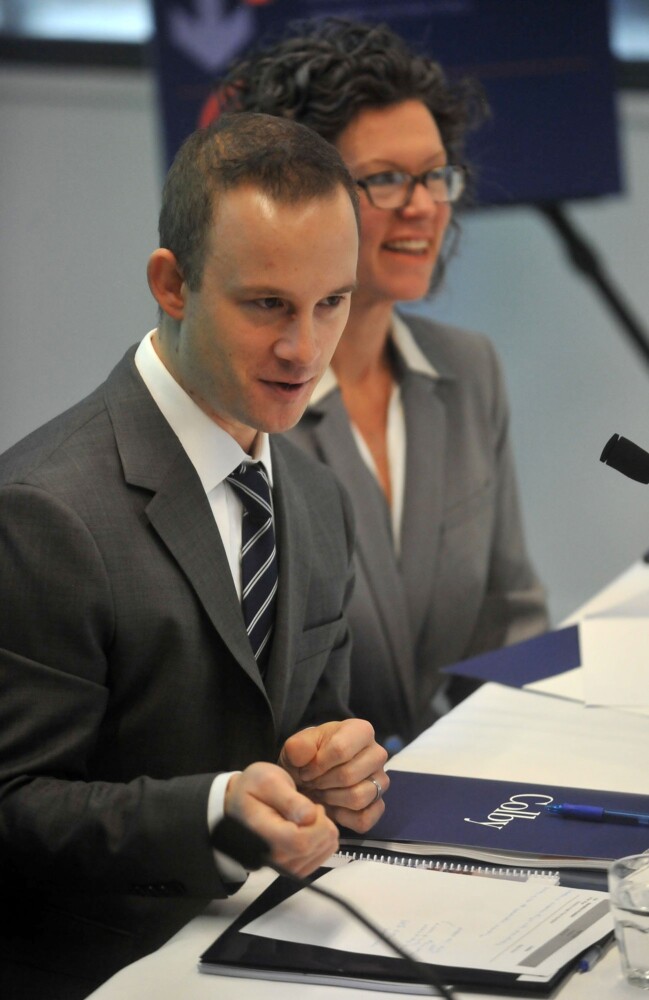
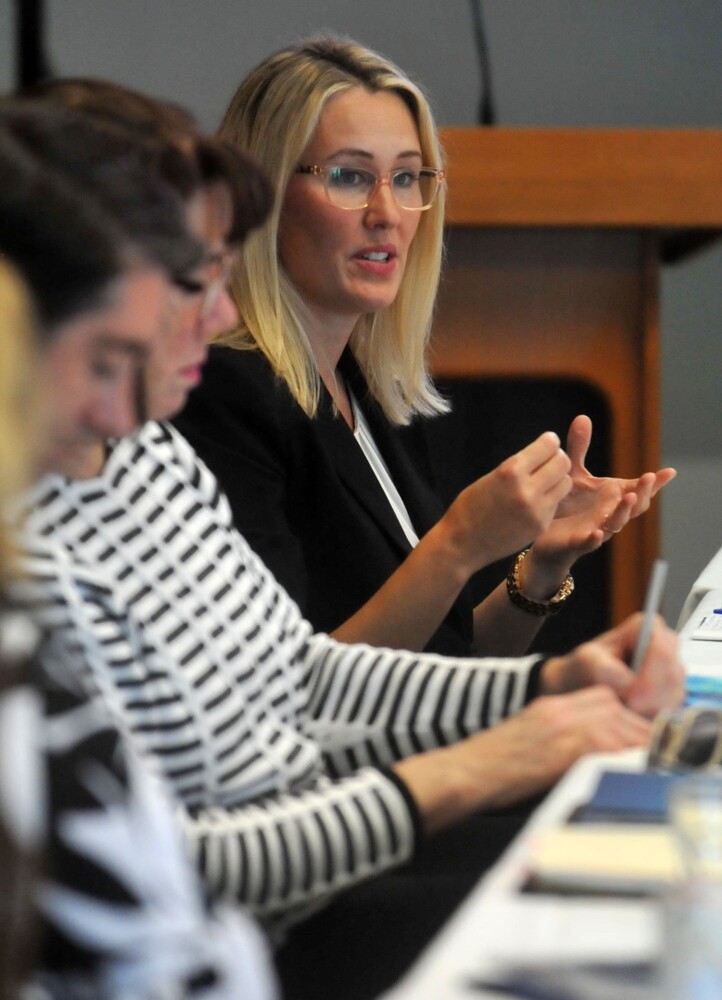
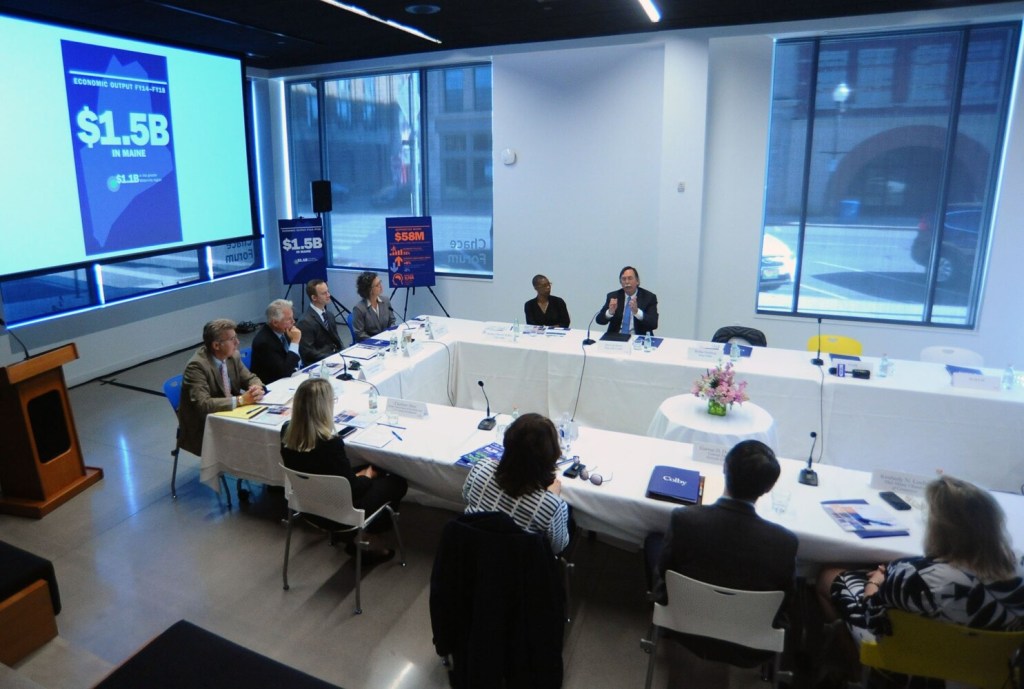
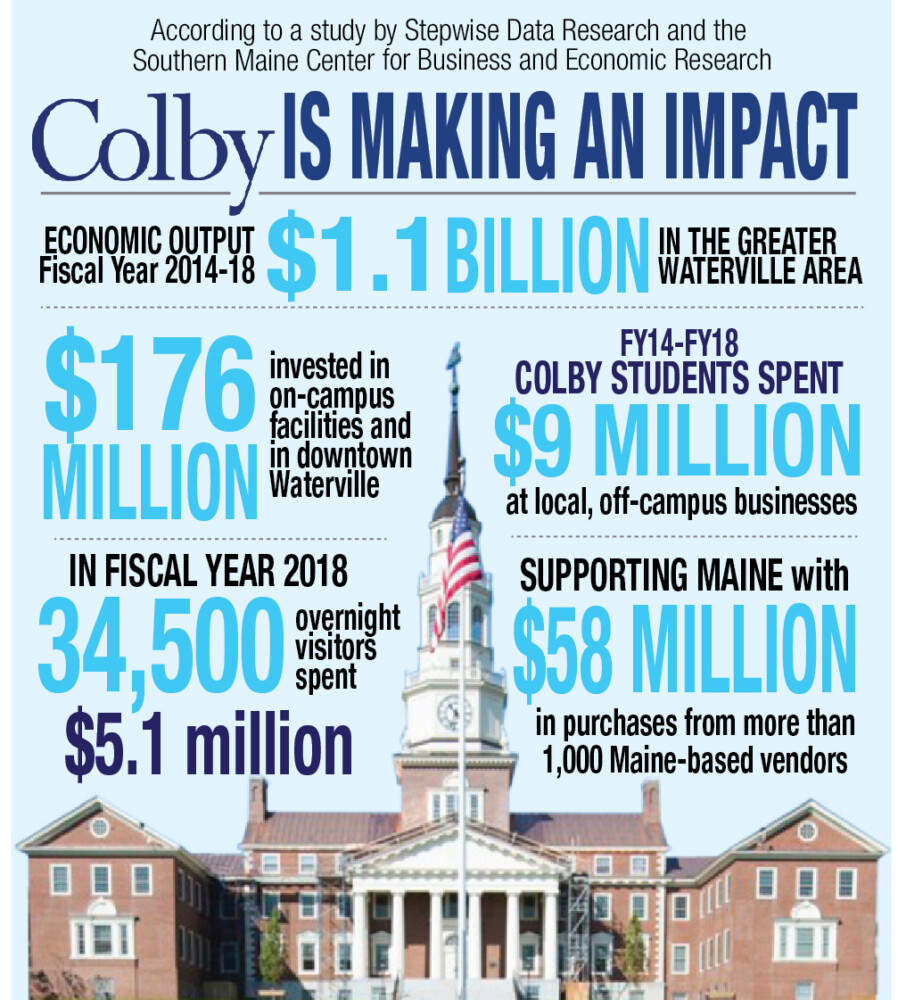

Success. Please wait for the page to reload. If the page does not reload within 5 seconds, please refresh the page.
Enter your email and password to access comments.
Hi, to comment on stories you must . This profile is in addition to your subscription and website login.
Already have a commenting profile? .
Invalid username/password.
Please check your email to confirm and complete your registration.
Only subscribers are eligible to post comments. Please subscribe or login first for digital access. Here’s why.
Use the form below to reset your password. When you've submitted your account email, we will send an email with a reset code.